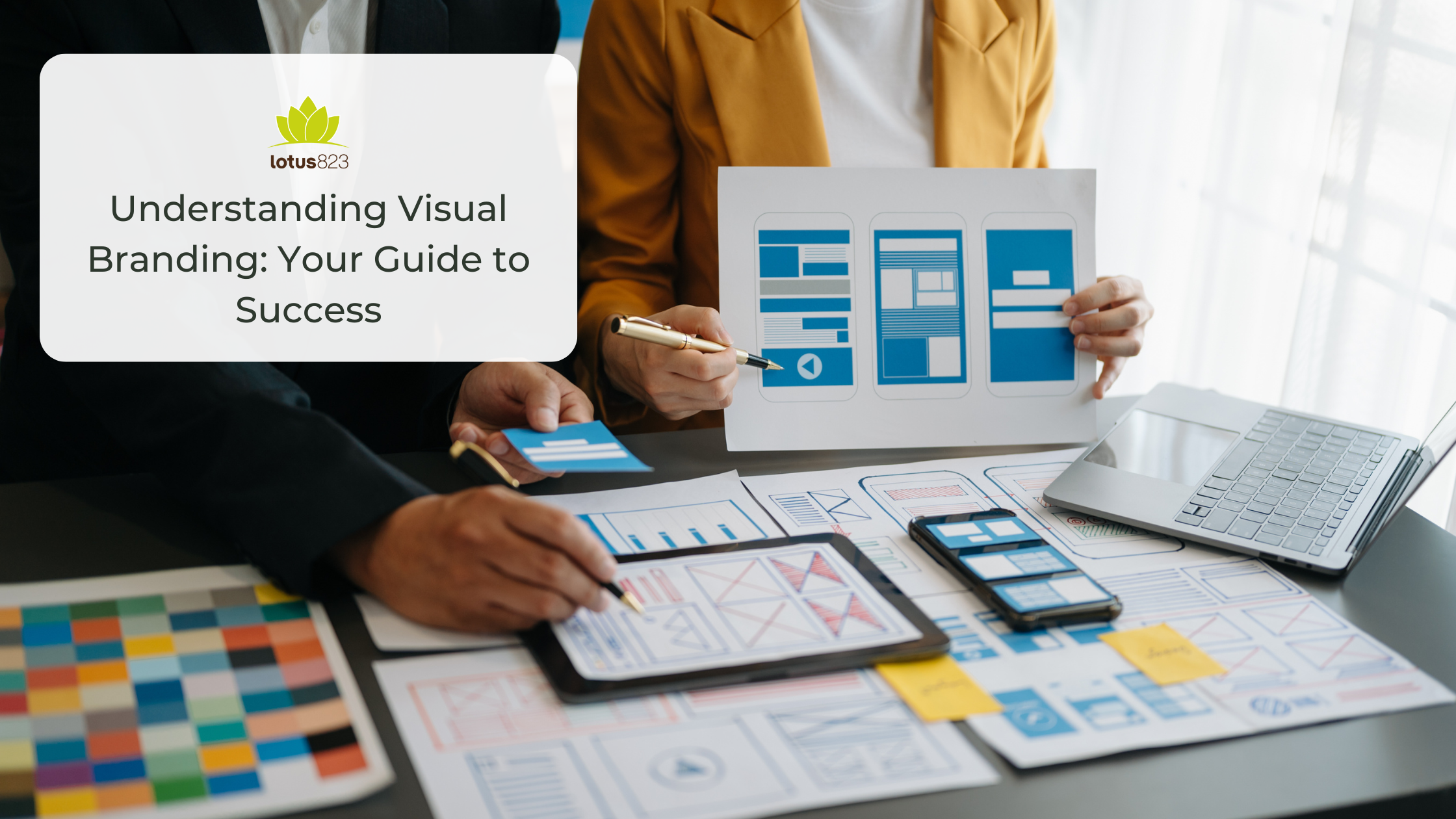
Take a moment and think about some of the most popular brands you know. Maybe it’s Target, Nike, the soda you had with lunch, or even your favorite sports team. If I asked you to pick these brands’ logos out of a sea of others, I bet you’d be able to do so quickly and easily. You’ve just witnessed the importance (and success!) of visual branding. This guide will discuss important pillars of creating a visual identity and tips for success.
Enhancing Brand Recognition
The visual branding of your product or service is essential to how your audience perceives, interacts, and recalls your business. Our brains can identify images in as little as 13 milliseconds, making your brand’s aesthetic representation essential to spreading your values. Creating a consistent and compelling visual identity can instantly communicate who you are and what you stand for, while also being memorable for when customers need your service or products. Over time, consistency in your logo usage, typography, and color scheme, makes it easier for consumers to quickly recognize your brand in various touchpoints.
Tips
- Develop a branding guide that includes the fonts, imagery, logo variations, colors, and any taglines your business will be using.
- The most important part: be sure to adhere to these guidelines in all elements of your brand’s communication. Branding guides can also assist in graphic design efforts to remain professional-looking and easily transferred across various platforms.
- Maintaining guidelines will ensure unity across all your marketing efforts, maintaining consistency and boosting brand recognition.
Building Trust and Credibility
Well-thought-out visual branding can significantly impact how credible your company appears to consumers. Brands that look polished and consistent can demonstrate your reliability and professionalism. A strong visual identity fosters community and trust amongst your audience–they’ll know what to expect of your products or services, making them more likely to exhibit brand loyalty.
Keep in mind that visual branding also supports verbal and written messages, making the right visual elements an easily digestible way to build a perception in the minds of consumers.
Tips
- Use visual elements to amplify your messages and create engaging content to resonate with your audience.
- Following the outlined brand guidelines established for your aesthetic representation across all visual elements–websites, social media, packaging, and more–will maintain a cohesive look, fostering trust and enhancing your brand’s reliability
- Partner with a professional visual designer who can adhere to graphic design standards and rules to create “good” content for your business, boosting professionalism and sleekness
Fostering Emotional Connections
Have you ever thought about how branding styles make you feel? Probably not because of the subconscious work our brains do without us even realizing it! When you think of Olipop branding vs. Bank of America, you will make vastly different associations based on the intentional visual representations of each. Elements such as colors, font choices, and imagery evoke emotions to create a connection with your audience.
Here are just some color-associated meanings to leverage when choosing a color for your brand:
- Green – peace
- Blue – trust
- Orange – energy
- Red – danger or attention
- Yellow – cheerfulness
Type is another way to convey emotion and further communicate your message:
- Thin, lighter, or rounder typefaces often convey lightheartedness or softness
- Bold, capitalized, type can symbolize a more serious or urgent message.
Returning to the Olipop logo, the rounded, curved alignment of the text, and big, and bright lettering on the colorful background convey fun and bold flavor, while the Bank of America logo is aligned flat, bold, and simple, conveying power, trust, and stability, all important aspects consumers consider when choosing a bank.
Emotional connection is the wonderful result of brand recognition and credibility intersecting to further establish your product’s unique role in a saturated market.
Tips
- Be intentional when building your brand guidelines when it comes to color, type, and imagery.
- Maintaining consistency to solidify the emotional connection consumers have to your brand, makes them more likely to recall it and support it.
- Don’t overdo it: stick to 3-5 color choices and 1-2 font choices to make your visual messaging direct and clear.
Although aesthetics are important, visual branding is so much more than a pretty logo. Used as a strategic communication tool, visual branding plays an essential role in how your products and services exist in the world, attract consumers, and remain relevant. Investing time and resources into building a strong visual identity and maintaining consistency can create lasting impressions, build trust, and foster an unbreakable connection with your audience, ultimately resulting in the success of your business as a whole.
Contact us today to discuss a personalized visual marketing strategy to achieve your goals!






